Judicial Conference
 The Wisconsin Judicial Conference is established by Supreme Court Rule 70.15 . The Judicial Conference is comprised of the justices of the Supreme Court, the judges of the Court of Appeals, the judges of the circuit courts, the reserve judges, three municipal judges designated by the Wisconsin Municipal Judges Association, one circuit court commissioner designated by the Family Court Commissioner Association, one circuit court commissioner designated by the Judicial Court Commissioner Association, and three representatives from the tribal courts. Supreme Court rule mandates that the Conference meet annually with special meetings when appropriate. The chief justice presides at the annual meeting of the Conference.
The Wisconsin Judicial Conference is established by Supreme Court Rule 70.15 . The Judicial Conference is comprised of the justices of the Supreme Court, the judges of the Court of Appeals, the judges of the circuit courts, the reserve judges, three municipal judges designated by the Wisconsin Municipal Judges Association, one circuit court commissioner designated by the Family Court Commissioner Association, one circuit court commissioner designated by the Judicial Court Commissioner Association, and three representatives from the tribal courts. Supreme Court rule mandates that the Conference meet annually with special meetings when appropriate. The chief justice presides at the annual meeting of the Conference.
Annual meeting of the Conference
The annual meeting ordinarily lasts two and one-half days and includes: the chief justice's State of the Judiciary Address; a general business meeting at which reports of the committees are delivered and resolutions are presented, and educational programs. The agenda for the annual meeting is set by the Executive Committee of the Judicial Conference and a program committee.
Judicial Conference Executive Committee
The Executive Committee has general charge over the affairs, policies and activities of the Judicial Conference and is comprised of the following members:
- the chief justice (chair)
- the next senior justice (first vice-chair)
- a second vice-chair
- a secretary
- five other Conference members including: one appellate judge, one reserve judge and three circuit court judges
The members are elected by the Conference. No member may serve more than two, three-year terms.
Standing committees
Conference bylaws have created the Nominating Committee and five standing committees. Committee members are elected by the Conference. Special study committees may be established. The standing committees are:
Civil Jury Instructions Committee. Prepares model civil jury instructions for circuit judges.
Criminal Jury Instructions Committee. Prepares model criminal jury instructions for circuit judges.
Judicial Conference members of the Judicial Council. The Judicial Conference designates four circuit court judges to serve on the Judicial Council.
Juvenile Jury Instructions Committee. Prepares model juvenile jury instructions for circuit judges.
Legislative Committee. Reviews pending legislation and may take positions supporting or opposing bills. To obtain a broad spectrum of viewpoints, the committee solicits judges to review bills within their areas of expertise and interest.
Uniform Bond Committee. Prepares various uniform deposit and bail schedules for misdemeanors and traffic offenses, violations of Department of Natural Resources rules, trespass to land, certain alcohol violations, tobacco violations, harassment, violations of University of Wisconsin rules, drug paraphernalia offenses and safety violations.
Nominating Committee
The Nominating Committee is comprised of the judges who chair the standing committees and the secretary of the Conference. Chairs of the standing committees are selected annually by the members of the standing committees.
The Nominating Committee advises the members of the Conference of open positions on the Executive Committee and the standing committees for which they may seek election. Nominations are then solicited. From these nominations, the Nominating Committee chooses one candidate for each open position and notifies the members of the Conference of its slate prior to the annual meeting of the Conference. Nominations may also be made by members of the Conference. The members of the Conference vote to fill the open positions.
Study committees
The Judicial Conference or the Executive Committee may create study committees to examine particular topics. These study committees must report their studies and recommendations to the next annual meeting of the Conference. The number of members is generally determined by the Conference, while members are selected by the Executive Committee. The tenure of a study committee is usually one year unless extended by the Conference.
An example of such a study committee is the Special Committee on Gender Neutrality which the Executive Committee created in 1996 to monitor, evaluate and report to the Supreme Court on gender bias issues in the court system. A similar committee conducted a pilot study of alternative dispute resolution mechanisms in the circuit courts. Past study committees have developed guidelines for rules of decorum for the circuit courts as well as staffing guidelines for the circuit courts.
Resolutions
Prior to the annual meeting, the secretary of the Conference solicits resolutions from Conference members. These resolutions relate to a wide range of issues. Each resolution is sent to the members of the Conference prior to the annual meeting and is voted on at the business meeting. The Executive Committee must indicate its approval or disapproval, or suggest modifications to each resolution before forwarding it to the Conference for action.
Any resolution which involves legislative changes must also be submitted to the Legislative Committee for review prior to the resolution being voted upon at the annual meeting. The recommendation of the Legislative Committee must then be submitted to the Executive Committee. If the resolution is approved by the Executive Committee, the resolution and the Legislative Committee's analysis are then submitted to the Conference. If the Executive Committee does not approve the resolution, the resolution is not submitted to the Conference unless two-thirds of the membership in attendance at the business meeting vote to bring it to the floor.

